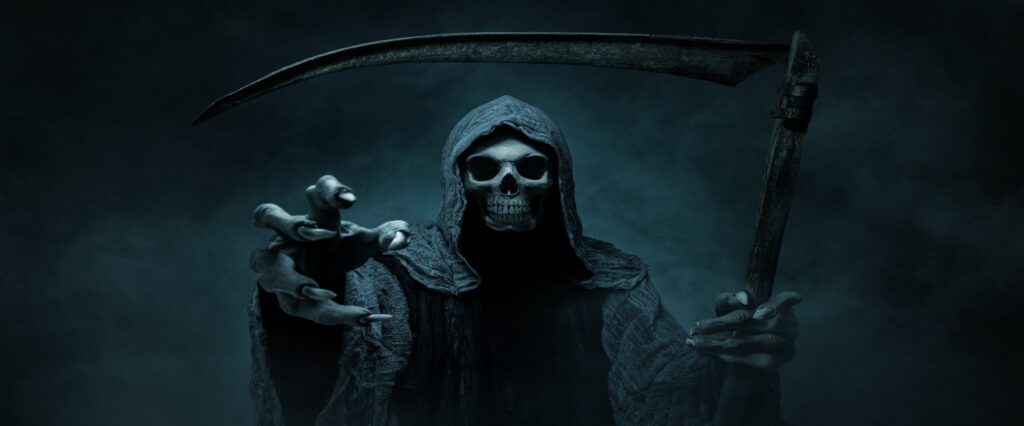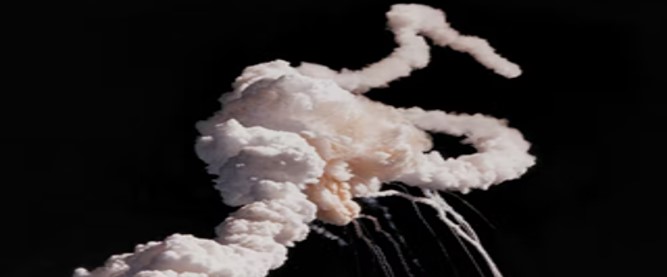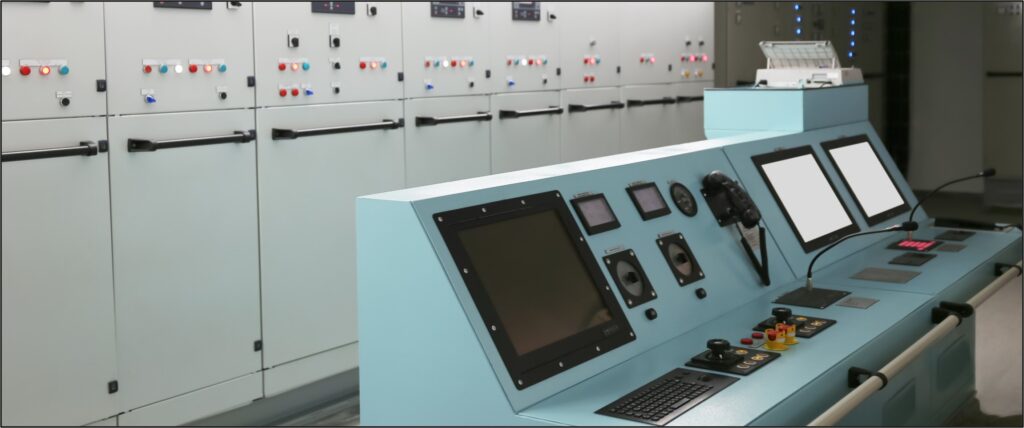J. K. HAMMOND
WRITING PORTFOLIO
Reflections from an old mind.
Note: This web page is still under development and subject to numerous changes in the near future.
Please direct any questions or concerns to Admin@jkhammond.com

My Fast-Food Philosophy of Life
A simple approach to successfully
navigating life’s little challenges.
By J.K.Hammond
Several years ago, I began formulating what I have come to call my “fast-food philosophy” of life. Allow me to explain. First, I suppose it is essential for me to establish exactly what I mean by the term “philosophy of life.” For the purposes of this discussion, the term “philosophy of life” refers specifically to the beliefs, assumptions, thoughts, and practices individuals employ in an effort to get through life and its never-ending assortment of challenges. In other words, one’s philosophy of life helps to guide (or at least influence) their thoughts and actions.
For some individuals, their philosophy of life is thoughtfully contemplated, consciously articulated, and possibly even written down to formalize its concepts and precepts. For other individuals, their philosophy of life is not formally defined but is more of a set of subconscious guidelines that help them to go through life without exploding, losing their minds, or ending up in prison. In most cases, the latter situation holds true, with very few people stopping to think through questions such as the following:
– How do I know when enough is enough?
– How much am I willing to take before getting angry?
– What is my limit before I yell, complain, or protest?
– How far am I willing to go to protect my family?
Now, back to explaining my fast-food philosophy of life. If I happen to be going through a fast-food drive-through in an attempt to acquire nourishment (an inherently futile effort in and of itself at such an establishment), I automatically assume that something about the meal I receive from the establishment will not be correct. Either the fries will be cold, the soda will be flat, or the restaurant will not fix the sandwich as requested. I know this going in and always anticipate this to be the result of such a culinary establishment transaction. Unfortunately, this proves to be the situation more often than not.
As a result of this conscious awareness that the meal will in some way be flawed, when something is indeed wrong with the order, I do not tend to get too upset about it. After all, I fully expected this to be the outcome going in, and I consciously decided to proceed with the food-purchasing transaction regardless of the anticipated outcome. However, if everything about the gastronomic package I receive from the establishment is correct, I will have reason to momentarily be somewhat pleased with at least a small part of the universe and my place or status in that universe. Unfortunately, the feeling rarely lasts much longer than the time required to consume the meal and move on to the next event in life.
This fast-food philosophy or approach to life tends to work with virtually every situation I encounter. For example, if a mechanic tells me my car will be ready in two hours, I automatically assume it will take at least four hours. If someone sends me a written item of some sort to review, I automatically assume that I will find some spelling and grammar errors. If I try to knock out a household repair that usually should only take a couple of hours, I automatically assume that the project will take me all day.
One could easily describe me as a textbook pessimist, although I prefer to think of myself as a realist. However, I believe it is much, much more than that. It is a complete lifestyle (which somehow sounds better than describing it as a desperately overblown, self-imposed defense mechanism that helps me get through life). If he were still alive, I would probably be able to send Frederick Herzberg screaming into the night as my approach to life tends to go contrary to that of virtually everyone else on the planet.
We commonly encounter numerous little annoyances during any given day, week, or month, and that’s what this discussion is all about. After all, as rational and civilized individuals, how we choose to respond to the little day-to-day annoyances is most certainly an indicator of how well or how poorly we are likely to respond when confronted with critical life events. Our responses to the minor annoying occurrences in life serve as a dress rehearsal for more significant events that potentially await us.
My approach to life tends to serve me well and acts as a thermostat by helping me to determine what life events should legitimately warrant a strong or aggressive response on my part and what events are truly insignificant in the bigger scheme of things. So, for example, those cold fries, that flat soda, or the auto repair that takes two or three times longer than promised are generally not worth yelling about, complaining about, worrying about, or losing sleep. Author Richard Carlson captured this sentiment in his 1997 book Don’t Sweat the Small Stuff… and it’s all Small Stuff.
Unfortunately, I would not go as far as to say that my approach to life results in any degree of happiness on my part. I am not the type of person that anyone would even begin to describe with adjectives along the lines of “happy,” “perky,” or “bubbly.” I can honestly say that the only thing bubbly about me is probably my digestive tract, particularly following the consumption of one of those aforementioned fast-food drive-through meals. I gave up on ever hoping to achieve happiness years ago. Instead, I find it easier to navigate the ups and downs of existence by striving to avoid the downs and let the ups take care of themselves. In the long run, I find that the stabilizing effect of this perspective tends to serve me well.
Copyright © 2023 J.K.Hammond | Published to Medium.com 10 Nov 2023

Hourglass of Life
By J.K.Hammond
Swiftly, sand flows through life’s glass.
Soon. Soon, it shall flow no more.
Then, will I cease my vain struggle,
to hold the Reaper’s scythe at bay.
Azrael and the Grim can heartily fight,
o’er the meager scraps that remain.
For I will care no longer.
Stoically, sand flows through life’s glass.
Scorn. Anger, rage round its flow.
No semblance of virtuous humanity,
remains for weary eyes to behold.
Indifference reigns supreme on high,
snuffing out peasants and kings alike.
Hope within me exists no longer.
Scornfully, sand flows through my glass.
Shadows. Mists, its current engulfs.
From my pale countenance withdraws,
the last day’s light, fading fast.
Twilight’s icy winds doth slash,
keenly at my calloused shell.
As breath, I can draw no longer.
Solemnly, sand flowed through my glass.
Silence. Still, its flow waned from view.
No longer shall this heartless sand,
my pathetic lifetime bounds define.
The Reaper’s scythe asunder cuts,
forlorn, Azrael ardently leads way.
For my sand flows no longer.
Copyright © 2023 J.K.Hammond | Published to Medium.com 3 Nov 2023

The Reaper Cometh
By J.K.Hammond
Minutes fade fast til midnight’s strike.
As last bells toll, Grim ventures forth
silently o’er the foreboding moors.
Striking down all foolish wanderers
who go forth before dawn breaks.
Be watchful my anxious children,
for the Reaper cometh.
Prowling silently through foggy mists.
As weary prey scurry, Grim slowly stalks
through fields and windswept villages.
Witless folk beseech dawn’s reprieve
whilst fleeing down darkened lanes.
Be cautious my frightened children,
the Reaper draweth nigh.
Striking swiftly, his scythe cuts clean.
As the stricken fall, Grim skillfully moves
among his night’s bountiful quest.
Vainly, the hopeless wanderers
seek cover, the hunt to forestall.
Take heed my quivering children,
the Reaper is amongst us.
Morning rays pierce night’s dark cloak.
As a hush falls, Grim solemnly departs
leaving the huts and hovels behind.
No townsfolk accept daybreak’s invitation
as death’s aroma permeates all around.
Rest peacefully my breathless children,
the Reaper’s work is done.
Copyright © 2023 J.K.Hammond | Published to Medium.com 31 Oct 2023

Achieving Balance in Life
When is enough, enough?
By J.K.Hammond
For many individuals, life ends up being a never-ending pursuit of more. Their efforts focus on wealth, power, prestige, or whatever it is that they think will give them happiness. Upon closer examination, they appear to equate happiness with more. What is happiness, anyway? Is it something one can purchase, steal, or otherwise acquire?
Whatever motivates people, most would probably agree that happiness is only possible by achieving some degree of balance in life. The tricky part of the equation is trying to define what balance means. One should be balancing what against what? What is your mental image of happiness? If you do not have a clear mental image of happiness, how can you ever hope to attain it?
Temet Nosce (Latin) – Know Thyself
One of the first critical steps in achieving balance in life is to know thyself, or temet nosce in Latin. (No, I do not profess to be knowledgeable of Latin. However, some things sound more meaningful in an ancient language that some consider dead, or at least somewhat comatose.) In order to truly know yourself, you need to be able to articulate several concepts to yourself:
Values – How do you define right/wrong, healthy/unhealthy, good/bad, etc.? More importantly, why do you define these concepts this way?
Temperament – What does it take to get you spun up? What is your dividing line that differentiates annoyed from enraged?
Passions – What things would you aspire to be doing each day if you did not have to concern yourself with earning a living, paying bills, or some of the more logistical aspects of life?
Objectives – When you are on your death bed and reviewing the life you lived, what will you regret in life? Will it bother you that you did not keep your car looking nicer or that you did not spend more time walking in the park with your grandchild?
Strengths / Weaknesses – In what areas are you willing to admit that you need help? Are there areas in which you can help others?
Ethical Dilemma
Years ago, I discovered there were limits to what I could stomach in conjunction with the daily grind we all must endure while pursuing happiness and balance in life. As a result, I began to define boundaries in my mind with regard to business, employment, finances, family, and other aspects of life.
I started asking myself, “when is enough, actually enough?” Did I need a three-bedroom house or three houses in various locations? Did I need a Honda or a Maserati? How far was I willing to go to obtain things in life? As I pondered some of the more existential aspects of life, I began to experience what I came to define as an ethical dilemma regarding employment and the necessary pursuit of life sustainment.
The best way I can describe my ethical dilemma would be to use a dentist as an example. While I have nothing against dentists, dental care, or related subjects, I find that the analogy is easily understood. The specific dentist to which I refer was a military dentist with whom I served. He was an active-duty military dentist for a few years. Then, he got out of the military and went into private practice. Eventually, he chose to go back into the military (again, as a dentist). When I asked him why he made these decisions, I found his answers quite enlightening.
During his initial military enlistment as a dentist, he used his skills to help people and improve their quality of life. Doing so made him feel good, but he was not making much, particularly for a doctor. Thus, he went into private practice as part of a multi-dentist group practice. As a result, he did much better financially and could better provide for his family. However, he found that he and his partners began to view patients more as production than people over time. If they could push ten more patients through each day, he could afford a boat or a bigger house. If the patient had excellent dental coverage, they might be inclined to take more x-rays or be a little quicker to decide if a tooth needed a filling. He saw his patients becoming a means to an end.
Eventually, he could not live with himself. He returned to being a military dentist, which allowed him to focus on the needs of his patients as opposed to his corporate bottom line.
How Much is Enough?
Your struggle to achieve and maintain balance may prove to require considerable effort. The struggle may yield long-term benefits or seemingly endless headaches. As a result, you may find that your definition of “enough” may (and likely will) evolve as time progresses. Such is the nature and mystery of the grand scheme we call life.
Copyright © 2022 J.K.Hammond | Published to Medium.com 24 Feb 2022

Is it Possible to Unlearn the Truth?
Ever find out the rest of the
story and wish you had not?
By J.K.Hammond
I recently researched a boring topic and stumbled upon information that I wish I had not read. Has anything like that ever happened to you? Have you ever found out the rest of the story (as legendary broadcaster Paul Harvey enjoyed saying) and wish you could go back to not knowing?
Routine Research
The other day, I was reviewing some data related to the O-ring failure that caused the catastrophic destruction of the Space Shuttle Challenger in January 1986. (Why I was researching O-ring failure is a subject for another day, perhaps when you have a bout of insomnia.) However, to this day, I clearly recall the Challenger disaster, which is amazing for my old brain.
It was a few minutes before noon on a cold Tuesday morning on the 28th of January 1986. I watched the live broadcast of the Space Shuttle launch while eating lunch. It was the 25th Space Shuttle mission since the program began, and the launches had become routine events – garnering little more than a passing mention on the evening news. However, this particular mission had extensive media coverage as NASA was sending the first schoolteacher into space, Christa McAuliffe. It was to be a huge public relations boon for NASA. They needed to foster more public interest and support for the program to ensure its future existence. This mission was going to put NASA back on the front page and restore the awe and wonder of the people. If they only knew ahead of time how wrong they were.
Shuttle Disaster Story
The morning of the launch was extremely cold by Florida standards, with temperatures dropping below freezing the night before. Icing on the orbiter, fuel tank, and solid rocket boosters was a concern and subject of much discussion throughout the night leading up to the launch. Dismissing cautionary concerns as an acceptable risk, NASA went forward with the launch. After all, they were NASA. They had launched Space Shuttles 24 times prior to this mission, with relatively few concerns arising throughout the process. After all, the shuttle was a workhorse and was more than ready to head back into space, so they thought.
Initially, the launch looked routine, and the shuttle cleared the launch pad without difficulty. A little more than a minute after launch, observers witnessed a flame shooting out from the side of the right solid rocket booster adjacent to the huge external fuel tank. Seconds later, it was all over at an altitude of approximately 46,000 feet. The external fuel tank exploded, and component parts flew in every direction.1 Having seen many of the previous shuttle launches, I knew how a launch typically looked. I, along with thousands of other viewers, watched in a state of shock. Had we actually seen what we thought we saw? Had the shuttle just blown up in front of our eyes? Needless to say, it took a minute or two to process the events unfolding before us.
The nation watched the tragedy. The news footage repeatedly aired throughout the afternoon showing the explosion and a massive ball of smoke, fire, and debris. That evening, President Ronald Reagan addressed the nation. He assured the American people that this tragic incident would not be the end of manned space flight for our country. Collectively, we mourned the loss of our astronauts and moved on with our lives. Unfortunately, what we all thought we were watching each time the media repeated the narrative was not exactly the entire story. As the subsequent investigation determined, the real story was a bit more complicated, and not one NASA was eager for the public to hear.
The Rest of the Story
The investigation following the incident took months. It included an extensive review of the audio, video, and telemetry data. Navy divers recovered extensive parts of the wreckage from the depths of the Atlantic. The full story of what happened following the launch slowly came into focus, but NASA did not openly discuss the conclusions. It certainly did not make the evening news. I would not go as far as to call the situation a cover-up, but nobody within the government was eager to have the information become common knowledge.
The investigative team determined that the shuttle itself (the actual reusable orbiter in which the crew traveled) did not explode during the tragic incident. It did suffer extensive damage. However, the cockpit assembly and the crew members survived for a few minutes. Unfortunately, the orbiter design did not include any mechanism by which to arrest the rapid descent of the crew cockpit.
After recovering the crew cockpit in March 1986, the investigation showed that several crew members tried to respond to the situation to the best of their ability – activating backup oxygen systems and attempting to restore cabin power. The crew was conscious through at least part of the nearly three-minute descent of the cockpit before it impacted the ocean at over 200 miles per hour. It is possible the crew was conscious until the final moments. No one can say for sure. However, the force of the cockpit impacting the water exceeded anything the crew could survive.2
Shock for the Second Time
I stared blankly at my computer screen the other day while reading the account of the accident. It brought on a level of shock similar to what I experienced back in 1986. Was I reading this correctly? Had the crew survived the initial explosion and lived long enough to experience the harrowing descent of the cockpit? I had no idea. Learning the true series of events leading to the deaths of those seven astronauts left me dumbfounded. If it were possible for me to unlearn the information I now know, I might well have chosen to do so.
References:
1 Pruitt, S. (27 Jan 2021) 5 Things You May Not Know About the Challenger Shuttle Disaster. History.com. https://www.history.com/news/5-things-you-might-not-know-about-the-challenger-shuttle-disaster
2 La Vone, M. (2020) The Space Shuttle Challenger Disaster. Space Safety Magazine. https://www.spacesafetymagazine.com/space-disasters/challenger-disaster/
Copyright © 2022 J.K.Hammond | Published to Medium.com 10 Feb 2022

What Would You Do With the Ashes
of Someone You Barely Knew?
Better yet, what if you inherited
several sets of ashes?
By J.K.Hammond
Have you ever run into one of those life or family situations where there is no particular right or wrong answer, and every option is fundamentally messed up? A few years ago, I encountered one such situation, and it still pops into my mind anytime someone mentions a funeral or similar event.
Background – Wife Number One
About 14 years ago, my mother passed away. My father had her cremated and placed in a decorative urn. He situated her urn in his house so that he could easily see and talk to her. I found the idea a little disconcerting, but who am I to tell anyone else how to manage their mourning process?
Wife Number Two
A year or so later, my father remarried. My father and I were not close, and I never saw him again following the wedding to his second wife. She was a complete stranger to me. I met her once (at the wedding), and then for only about 10 minutes. The ceremony was simple, held in a barn (yes, I am serious about that), and lasted five minutes. We departed immediately following.
A few years later, his second wife passed away. He had her cremated and placed in an urn in a similar fashion as before. At that point, I suppose he had a pair of wives to talk to as he puttered around the house. I never asked and really did not care to know about the details.
Wife Number Three
A few months later, he married again for the third time. His third wife was also a stranger, and I never met her. After a few years, they both ended up in assisted care facilities. My father soon passed away in his mid-80s following a lengthy struggle with dementia. Per his wishes, my oldest brother had him cremated as well. Now, there were three urns. I am not an expert on such things, but I suppose this constitutes a collection.
The Conundrum
Following my father’s death, I believe my brother placed the urn collection on a shelf in the garage. He did not have a clue what to do with them. Unfortunately, wife number three was not mentally aware enough to make decisions and none of the three deceased individuals left behind disposition instructions for their ashes. Thus, the dilemma. What do you do with three sets of ashes of people with whom you did not have an emotional connection? Also, if you scattered or otherwise dealt with the ashes, what do you do with three used urns?
The Secondary Urn Market
I rarely talk to my brother, and he lives 800 miles away. To this day, I have no idea how he chose to handle the situation. Maybe he dumped out the ashes and sold the urns. I checked if eBay ever handled the resale of used urns just out of curiosity. Would you believe there were over 20,000 pre-owned urns available on eBay when I looked? Apparently, there is a used urn industry out there. I never had a clue. Frankly, I never wanted to know.
Family Legacy
I occasionally wonder what happened to the urn collection. Maybe the urns are still sitting on a shelf in my brother’s garage. They may be clocking time until passed down to one of my brother’s children. If this happens following my brother’s death and cremation, will the urn collection grow even larger? How will it end? When will it end? Perhaps they will repeatedly pass down from father to son like a re-gifted Christmas fruit cake. Only time will tell.
Oh, what sorted tales spring forth from otherwise quiet families throughout the generations.
Copyright © 2022 J.K.Hammond | Published to Medium.com 10 Feb 2022

Do You Remember Computers
Before the Invention of Windows?
I feel like a fossil when I consider
how ancient some of my skill sets are.
By J.K.Hammond
If you remember using a dial-up connection to get on AOL, having a colossal monochrome monitor on your desk, mastering DOS (Disk Operating System) commands, and printing to a dot matrix printer, then it is almost certain that we both literally grew up in the last century. Come with me on a trip down memory lane, if you dare…
Vacuum Tubes and 8-Inch Floppy Disks
A long time ago, in a university laboratory far, far away… It really was Star Wars – as in the Reagan Era Strategic Defense Initiative (AKA the Star Wars Program). In conjunction with a Strategic Defense Initiative research project, the first computer I used in college back in the 80s had vacuum tubes and used gigantic, 8-inch floppy disks. It was a pretty nice system in its day, considering the Internet as we know it today did not exist. Of course, Microsoft Windows, Google, and everything else we take for granted today did not exist yet either.
[Quick History Lesson: For any younger readers out there… Ronald Reagan was one of the U.S. presidents back during the last century. He was famous for working on a professional level with a monkey named Bonzo. No doubt, this experience uniquely prepared him for dealing with the members of the U.S. Congress when he later became president.]
ARPANET
One of the jobs of that archaic computer system I used back in college was to allow us to connect to the ARPANET (Advanced Research Projects Agency Network). I do not recall us actually using the ARPANET for much of anything since there was probably only a hand full of research laboratories in the country connected to the system at the time. However, we had access to it, and it was pretty neat (at least we thought so back then).
[Quick History Lesson: Again, for our younger readers out there… There has not always been the Internet. No, really! Back in the last century, we communicated in writing, conducted research in libraries, and even had horseless carriages (AKA automobiles).]
FORTRAN and BASIC
Back in the day, I received training and was quite good at utilizing some computer programming languages commonly used during that era. I could program with the Formula Translating (FORTRAN) and Beginners’ All-Purpose Symbolic Instruction Code (BASIC) languages like an expert. (Of course, by modern comparison, that would be liking writing in Sanskrit.)
[Quick History Lesson: If you are not familiar with FORTRAN, the IBM team developed it in the 1950s to program their room-sized mainframe computers, which were only a little more advanced than some modern coffee makers.]
Ah, those were the days. Life was simple. We were relatively happy. Technologically, we were living in the stone age, but it was all new and exciting at the time. Does anyone else remember watching movies on a Betamax, using typewriters, adjusting the rabbit ears on the television, and thinking that fax machines would revolutionize the modern office environment?
I hate to admit it, but I still periodically enjoy reading an actual, printed newspaper while indulging in a cup of java at my local coffee shop. (Ordered without using a phone app, paid for in paper money, and consumed sitting in a chair while not giving any thought to social distancing.) If given the opportunity, I would gladly give up my iPhone, 24-hour news channels, and other modern novelties if we could turn back the clocks to those simpler days for a while. Does anybody else miss hearing the National Anthem each night around midnight before the television station would sign off and conclude its programming day?
Copyright © 2022 J.K.Hammond | Published to Medium.com 3 Feb 2022

Stop Aiming Big and
Try Aiming at a Target
Is the pursuit of a true understanding of
the universe ultimately a fool’s errand?
By J.K.Hammond
One could rationally ponder whether we, as a species, should expend time and energy in an attempt to resolve the fundamental questions surrounding life itself. Should we, instead, focus our limited resources on more obtainable although less cerebral endeavors? Would it be logical to challenge the philosophical questions themselves before striving to clarify or understand existence? Unfortunately, when it comes to such discussions, this is often the point at which my head begins to hurt.
The Ultimate Questions of Life
From our earliest years, we tend to have an inexhaustible supply of questions about life.
– Why is the sky blue?
– Why do leaves change color in the fall?
– Why do dogs have four legs?
– Why must I put on my socks before my shoes?
Some questions are relatively simple and somewhat innocuous. Other questions tend to inspire deep, metaphysical discussion.
– Why are we all here?
– What is the meaning of life?
– Is there a guiding force greater than man?
– Is there intelligent life elsewhere in the universe?
– Why do we drive on a parkway and park in a driveway?
Focus
From a more practical perspective, it is more important to focus our efforts than attempt to acquire ultimate knowledge. However, on what should we focus? In our modern culture, we often hear people recommending that we should think broadly, aim big, reach for the stars, or any number of other clichés. For decades, such advice has been the foundation of the infomercial and self-help publication industries. Recommendations such as these tend to sound good, at least in a superficial way. However, as a matter of practical application, counsel of this type is not actionable and ultimately of little use.
Stop Aiming Big
Most people find it more practical and achievable to stop aiming big and try aiming at a target. Many years ago, American writer and speaker Zig Ziglar presented a similar argument when he stated, “if you aim at nothing, you will hit it every time.”1 If you are shooting for the stars, it is highly likely that you are not focusing your efforts in a worthwhile direction. Focusing efforts on a definitive target makes it possible to obtain meaningful insight and identify potential solutions to many of life’s problems.
Never Underestimate the Insignificant
Sometimes insight and solutions to philosophical dilemmas in life can come to us very quietly or from singularly unexpected sources. In many cases, the small decisions or the almost overlooked details in life determine our futures. One would do well not to underestimate the ability for that which appears insignificant to prove genuinely noteworthy.
Reference:
- Ziglar, Z. (date unknown). Famous Quotes. https://www.famousquotes.com/quote/zig-ziglar-quotes-1964175
Copyright © 2022 J.K.Hammond | Published to Medium.com 30 Jan 2022

Do You See a Half-Empty Glass, a
Half-Full Glass, or Something Else?
An Asperger’s perspective on an old
description of optimists vs. pessimists
By J.K.Hammond
What do you see when you look at the picture of a partially filled drinking glass? Most readers are no doubt familiar with the concept of describing such a glass as being either half empty or half full, depending upon your point of view. Maybe it is just my Autistic (Asperger’s) perspective, but I do not see either of these assessments as my preferred choice.
Background Behind the Debate
The true origin of the glass-is-half-empty / glass-is-half-full concept is not definitively known. However, people have been employing the idea for decades to illustrate the difference between optimists and pessimists simplistically. However, are the half-empty/half-full options the only available alternatives?
Choice A: The Glass is Half-Empty – Pessimistic Perspective
Some believe that a glass-is-half-empty assessment demonstrates an inherently pessimistic observation. The idea here is that the glass contains something you want or need (e.g., water) and that a lesser available amount represents a potentially negative outcome (e.g., thirst, dehydration, or death).
Choice B: The Glass is Half-Full – Optimistic Perspective
Along those same lines, some believe that a glass-is-half-full assessment demonstrates an optimistic viewpoint. The glass is half-full of something desired, thus presenting the holder with a potentially positive outcome.
Of course, both Option A and Option B focus on the contents of the glass. These options have a basis in the concept that the contents are desirable. I suppose it would up-end the argument if the holder viewed the contents as harmful or dangerous. Either way, Option A and Option B tend to work best for those who view the situation as having strictly two available perspectives, each of which is in diametrical opposition to the other.
Instead of focusing on the contents of the glass, what if we look specifically at the glass itself?
Choice C: An Opportunity Exists – Acquire More to Drink
Does the partially filled glass present the holder with the opportunity to obtain more of whatever the glass contains? Does the situation allow the holder to potentially achieve a better position in life simply by having additional available capacity? One might view this as being an entrepreneurial perspective.
Choice D: An Opportunity Exists – Economize by Using a Smaller Glass
Perhaps the partially filled glass provides an opportunity for the holder to improve efficiency by reducing the size of the glass. Would a smaller glass cost less, require fewer raw materials, or allow the holder to be greener? One might view this as being a prudent or conservationist perspective.
Choice E: All of the Above are Acceptable Options
In actuality, each choice is potentially correct, and all choices may be simultaneously correct. A half-empty or half-full observation is purely a quantitative assessment and does not inherently present any particular perspective on the situation. Along the same lines, the physical size of the glass allows both the potential to acquire more contents or to optimize through the use of a smaller glass.
I cannot say for sure if it is the Asperger’s nature of my personality, but I do not see any viability for argument here. Each perspective is simply an observation of reality, and I would not justify expending much energy debating one position over another. What are your thoughts? What do you see when you look at the glass?
Copyright © 2022 J.K.Hammond | Published to Medium.com 30 Jan 2022